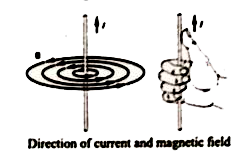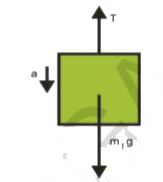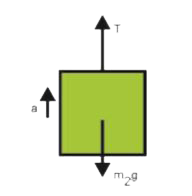Explore topic-wise InterviewSolutions in .
This section includes InterviewSolutions, each offering curated multiple-choice questions to sharpen your knowledge and support exam preparation. Choose a topic below to get started.
| 201. |
During resonance , the body undergoing forced vibrations vibrates with a large amplitude . |
|
Answer» |
|
| 202. |
If two balls of different masses are dropped on sand, the depths of penetration is same if : |
|
Answer» Heavier BALL is DROPPED faster than lighter ball |
|
| 203. |
Calculate the force of gravitation between the earth and the sun, given that the mass of the earth =6xx10^(24)kg and the sun =2xx10^(10)kg. The average distance between the two is 1.5xx10^(11)m. |
|
Answer» Solution :According to question, M SUN = Mass of the sun `=2xx10^(30)kg` M earth =Mass of the Earth `=6xx10^(24)kg` R=Average distacne between the earth and the sun `1.5xx10^(11)m` From UNIVERSAL law of GRAVITATION, `F=G(Mm)/(R^(2))` Therefore putting all the value given in question in above equation we GET `((6xx10^(24))xx(2xx10^(30)))/((1.5xx10^(11))^(2))=3.56xx10^(22)N` |
|
| 204. |
Name the two types of waves which can be generated in a long flexible spring (or slinky). |
|
Answer» |
|
| 205. |
Resistance of a wire depends on…………. |
|
Answer» temperature |
|
| 206. |
Take a slinky as shown below. Ask a friend to hold one of its ends. You hold the other end and move away from your friend. Now you release the slinky. What happened? |
| Answer» Solution :When the SLINKY is released it REGAINS its ORIGINAL length. | |
| 207. |
Take a slinky as shown below. Ask a friend to hold one of its ends. You hold the other end and move away from your friend. Now you release the slinky. How did the slinky acquire energy when stretched? |
| Answer» SOLUTION :When the slinky is stretched, it acquired ENERGY due to WORK DONE on it during STRETCHING. | |
| 208. |
Take a slinky as shown below. Ask a friend to hold one of its ends. You hold the other end and move away from your friend. Now you release the slinky. Would the slinky acquire energy when it is compressed? |
| Answer» Solution :Yes. To COMPRESS the SLINKY, work has to be done which is STORED in the slinky as POTENTIAL energy. | |
| 209. |
A train is moving with a velocity of 90 km h^(-1). It is brought to stop by applying the brakes which produce a retardation of 0.5 m s^(-2) ? Find : (i) the velocity after 10 s, and (ii) the time taken by the train to come to rest. |
|
Answer» |
|
| 210. |
When an object of mass 10 kg is at height ………… m, its potential energy would be 200 J. (Take g=10ms^(-2)). (2, 5, 10) |
|
Answer» |
|
| 211. |
A, B , C and D are four transparent sheets of equal thickness and madeof material of refractiveindices mu_(A), mu_(B), mu_(C), and mu_(D). If a light ray propagates throughthem as shown in the figure, compare their refractiveindices and also find if any of them have the same refractive index. |
|
Answer» Solution :Let us represent angles of incidence and angles ofrefraction in A, B , C , D as `i_(A), i_(B), i_(c), i_(D), r_(A), r_(B), r_(C) and r_(D)`, respectively. `r_(B) lt i_(A) RARR mu_(B) gt mu_(A)` `r_(C) gt i_(B) rArr mu_(B) gt mu_(C)` `r_(C) = r_(A) rArrmu_(C) = mu_(A)` `r_(D) lti_(c) rArr mu_(D) gt mu_(C)` `r_(B) lt r_(D) rArr mu_(B) gt mu_(D)` as such `m_(A) = mu_(C) lt mu_(D) lt mu_(B)` |
|
| 212. |
Convert the following . (i)25^@C to Kelvin (ii)200 K to .^@C |
|
Answer» SOLUTION :(i)`T_K=T_(C)+273.15` `T_K`=25+273.15=298.15 K (II)`T._(@C)=T_K` -273.15 `T._(@C)=200-273.15 =-73.15^@C` |
|
| 213. |
How much till will be required to perform 520 J of work at the rate of 20 w? |
|
Answer» 24 s |
|
| 214. |
A charge 0.5 C passes through a cross section of a conductor in 5 s. Find the current. |
|
Answer» |
|
| 215. |
The temperature-time graph obtained when hot water is allowed to cool resembles the graph given in one of the following figures. The correct figure is: |
|
Answer» A |
|
| 216. |
A body starts from rest and acquires a velocity 10 m s^(-1) in 2 s. Find the acceleration. |
|
Answer» |
|
| 217. |
State whether the resistance of filament of a bulb will decrease, remain unchanged or increase when it glows. |
|
Answer» |
|
| 218. |
How are the following derived units related to the fundamental units ? pascal |
| Answer» SOLUTION :`KG m^(-1) s^(-2)` | |
| 219. |
What are the applications of X-rays ? |
| Answer» | |
| 220. |
The earth is not a perfect sphere, its radius is not the same everywhere If so, will the value of g be the same everywhere on earth? |
|
Answer» |
|
| 222. |
A butterfly of mass 1.0 g moves upward against the gravitational force with velocity 0.5ms^(-1) and a squirrel of mass 250 g climbs the tree with velocity 0.5ms^(-1), then compare their power. (g=10ms^(-2)) |
|
Answer» `P=Fv` `=(mg)V` `=(10^(-3)kg)xx(10ms^(-2))xx0.5ms^(-1)` `=5xx10^(-3)W` Power of the SQUIRREL, `P.=F.v.` `=(250xx10^(-3)kg)xx(10ms^(2))xx(0.5ms^(-1))` `=1.25kW` |
|
| 223. |
Define : Speed |
| Answer» Solution :The distance TRAVELLED by an object in UNIT TIME is CALLED the SPEED of the object. | |
| 224. |
A body of volume V and density rho is kept completely immersed in a liquid of density rho_(L). If g is the acceleration due to gravity, write expressions for the following (i) the weight of the body. (ii) the upthrust on the body. (iii) the apparent weight of the body in liquid, (iv) the loss in weight of the body. |
|
Answer» |
|
| 225. |
To hear a distinct echo the time interval between the original sound and reflected sound must be |
|
Answer» (0.2 s) |
|
| 226. |
We can distinguish between sound having same pitch and loudness this characteristic os sound is |
|
Answer» 1 |
|
| 228. |
The volume of a balloon is 1000m^(3). It is filled with helium of density 0.18kgm^(-3). What maximum load can it life. Density of air is 1.29kgm^(-3) |
|
Answer» Solution :GIVEN volume of balloon `V=1000m^(3)` density of helium `rho=0.18kgm^(-3)` density of air `=1.29kgm^(-3)` WEIGHT of helium FILLED balloon `=Vxxrhoxxg=1000xx0.18xxg` `=180gN=180` kgf Weight of air displaced = upthrust `=Vxx"density of air"xxg` `=1000xx1.29xxg` `=1290gN=1290kgf` RESULTANT upward force on balloon = upthrust-weight of balloon `=1290-18=110` kgf So it can life a maximum LOA d of 1110 kgf. |
|
| 229. |
Water is heated from 0^(@)C ato 10^(@)C. How does the density of water change with temperature? |
|
Answer» |
|
| 230. |
What is loudness of sound ? What factors does it depends on ? |
|
Answer»
|
|
| 231. |
Lifting a small stone to a certain height and then dropping it downwards. What about the speed when it falls down? |
|
Answer» |
|
| 234. |
What will be the result when a man tries to move a vehicle by pushing it, standing inside the vehicle ?The vehicle moves/the vehicle doesn’t move. |
|
Answer» |
|
| 235. |
A load of 600 kgwt is raised over an inclined plane as shown in the following figure. How much force forming a couple should act on the pulley so that the load is just raised? |
|
Answer» Solution :(i) Use the definition of mechanical advantage and principle of moments. (ii) Calculate the effort (E) required to pull the load, using E = mg ` SIN theta`. (iii) Part of the total FORCE requiredto pull the load is PROVIDED by 100 kgwt. (IV) Calculate the remaining force by ` E - (100 xx 10) N = F_(1)`. (v) `F_(1)xxR` forms anti-clockwise moment on the pulley, where R = radius of the pulley. (vi) Let `F_(2)` be theforce forming a couple so that the load is just raised. (vii) Calculate `F_(2)` using : `F_(1)xx R=F_(2)xx2(R)`. (viii) 1000 N. |
|
| 236. |
A 1/2 kg sheet of tin sinks in water but if the same sheet is converted into a box or boat, it floats. why ? |
|
Answer» |
|
| 237. |
Velocity-time graphs vehicle A for vehicles A and B are shown in figure Which vehicle has accelerated motion vehicle B and which vehicle has retarded motion ? |
|
Answer» Vehicle A retardation, vehicle B acceleration |
|
| 238. |
What is the force acting on a body of mass 10,000 kg on earth, due to the gravity of the sun? Also find the force on the body due to the gravity of the moon. Which exerts more force, the sun or the moon? Mass of the sun = 2 xx 10^(30) kg, Mass of the moon = 7.3 xx 10^(22) kg, Distance between the sun and the Earth = 1.5 xx 10^(11) m Distance between the moon and the Earth = 3.84 xx 10^(8) m Radius of the Earth = 6.4 xx 10^(6) m |
| Answer» Solution :(i) Take the mass of the BODY on earth. Find the force of ATTRACTION on the body due to the gravity of the moon and sun using the FORMULA, `F = (GMm)/(R^(2))`. Find the values of 'F' due to the sun and moon and then compare the values. | |
| 239. |
The part of the AC generator that passes the current from the armature coil to the external circuit is……….. |
|
Answer» FIELD magnet |
|
| 240. |
What is a trip switch? |
| Answer» Solution :It is an electromechanicaldevice which does not ALLOW a current beyond a particular VALUE by automatically switching off the CONNECTION. | |
| 241. |
What is the magnetic effect of electricity? |
Answer» Solution :A wire or a conductor accying current DEVELOPS a magnetic field PERPENDICULAR to the direction of the flow of current. This is called magnetic effect of current. The discovery of the scientist Oersted and the .right HAND thumb rule. are detailed in the chapter on MAGNETISM and Electromagnetism in this book. Direction of current is SHOWN by the right hand thumb and the direction of magnetic field is shown by other figers of the same right hand. 
|
|
| 242. |
{:("Column - I","Column -II"),((a)"Density",(i) hrhog),((b)" 1 gwt",(ii)"Milk"),((c)"Pascal's law",(iii)"Mass/Volume"),((d)"Pressure exerted by a fluid",(iv)"Pressure"),((e)"Lactometer",(v)"980 dyne"):} |
|
Answer» |
|
| 243. |
Explain how the discharge phenomenon is applied in fluorescent lamps and neon lamps. |
| Answer» SOLUTION :CONSIDER the CONDITIONS for the gas in the discharge tube to glow and the fluorescence of the glass tube. | |
| 244. |
Calculate the molefraction of each component in a solution made by mixing 52.0 g CH_(3)COOH (acetic acid) and 100 g water. |
|
Answer» Solution :`n_(1)=(w_(1))/(M_(1))=(100)/(18)` mol for water, M (water)=18 G `mol^(-1)` `n_(2)=(w_(2))/(M_(1))=(52.0g)/(60" g "mol^(-1))=(13)/(15)mol`(CHECK that `x_(1)+x_(2)=1`) `therefore x_(2)=(n_(2))/(n_(1)+n_(2))=((13)/(15))/((13)/(15)+((100)/(18)))=0.135 and x_(1)=1-x_(2)=1-0.135=0.865` |
|
| 245. |
Atwood machine Atwood used the system to prove Netwons laws of motion. Atowood machine consists of two loads of mases m _(1) and m _(2) attached to the ends of a limp of inextensible string as shown in tghe figure 11. The string runs over a pully. FInd the acceleration of each load and tension in the string (m _(1) gt m _(2)) |
Answer» SOLUTION :we know that tension of STRING always tries to pull te bodies up.  From the FBD of the mass `m _(1),` there exist TWO forces on the load of mass `m _(1),` one is tension of the string acting in upward DIRECTION and weight of the load `(m_(1) g)` acting in downward direction. The net force on `m _(1) F _(n et) = m_(1) a` `implies m_(1) g -T =m_(1) a ---------------(1)` Thus the net force `(F_(n et))` acting on mass `m _(1)` produces an acceleration .a. in it. When `m _(1)` moves down, `m _(2)` moves up. So the magnitudes of acceleration are same.  From the FBD of mass `m _(2)` `F _(n et) =T - m _(2) g =m_(2)a ----------------(2)` SOLVING (1) and (2) equations, we get `a = ((m _(1) - m _(2) g)/( m _(1) + m _(2))` ` T = ( 2m _(1) m _(2) g)/( m _(1) +m_(2))` |
|
| 246. |
You must have seen the doctor checking the sounds produced in the chest or heartbeat of a patient using a medical instrument called Stethoscope. On what principle does this Stethoscope work? |
|
Answer» refraction |
|
| 247. |
List the main parts ofelectric motor. |
|
Answer» Solution :Main parts of an electric motor are: (i) Shaft, (ii) Primary and Secondary WINDINGS, (iii) Ball bearings, (IV) Aramature, (v) Stator, (VI) COMMUTATOR, (vii) Brushes (viii) Terminals |
|
| 248. |
Comapre the properties of alpha, beta and gamma radiations. |
| Answer» | |
| 249. |
Find out the reasons for the following. A piece of stone experience a loss of weight within water. |
|
Answer» |
|
| 250. |
A solid roller having a diameter of 0.82 m is to be raised on to a step of height 32 cm (shown in the figure).If the roller weights 50 kgwt, find the minimum forcethat can be applied on the roller for thepurpose. (Takeg=10 m s^(-2)) |
|
Answer» Solution :(i) Anlayse the forces that act on the roller and thepoint of application of force for the torque. (II) ` tau = rF` and `tau` is CONSTANT (iii) Weight of the roller acts at its geometriccentre (downwards). (iv) Find the effective 'r' to calculate the torque using the PYTHAGORAS theorem and then find the torque. (V) For a given torque, 'F' is minimum where 'r' is maximum. (vi) Maximum 'r'is the DIAMETER of the roller. (vii) E - 110 N |
|